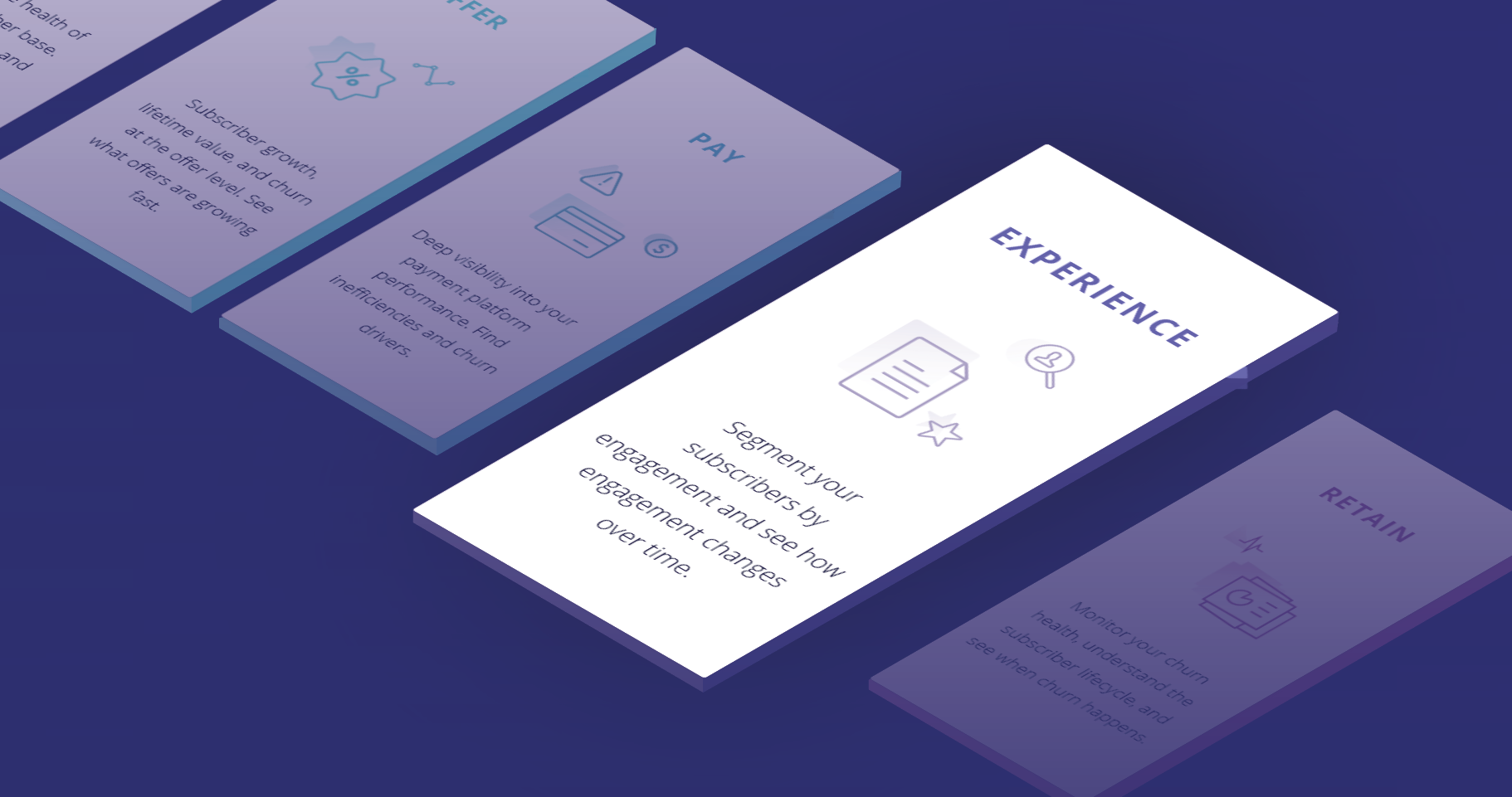The question might not be easy to answer at first sight, but what is data for?

Cleeng’s subscriber analytics makes your job easier by providing you with engagement data that indicate how much value your customers get from your product.
Here are the 4 most important questions your engagement data answers:
- How many of your customers are actually engaged with your service?
- How do your customers like to view your content (e.g. watch every day vs. watch on Saturday nights)?
- Who are your superfans? How big a cohort are they?
- How big of a risk is low engagement? How many customers are drifting towards churn?
What is Engagement?
Customer engagement is their involvement with your brand and content. Indicators such as clicks provide information about engagement. For example, every time a customer attempts to watch a video (e.g. clicks on a “Play” button), they are counted as having engaged with your service on a given day.
In more technical terms, engagement is a successful entitlement check for a customer.
Why measure Engagement?
Most importantly, to understand your customers better. This stage of the Retention Journey is designed to help you track, analyse, and grow the value that your customers derive from your subscription service.
What data do you get?
Engagement Intensity Metrics
Cleeng provides 3 metrics for tracking the overall engagement of your customers:
- Monthly engaged users (the number of customers who access your content at least once a month)
- Weekly engaged users (the number of customers who access your content in a typical week)
- Daily engaged users (those who access your content in a typical day).
These metrics help you see how deeply your customers are engaged with your content and give you insight into their preferred usage patterns.
You can set target usage behaviour for your product and use the statistics to measure the actual engagement against the target level.
For example, your aim is to have 20% of subscribers engaged daily and the actual engagement level is 8%. When you see the gap, you can act accordingly and plan a strategy: you might revise the usage model or intensify efforts to increase daily engagement.
Engagement-Churn Relationship Metrics
Engagement analytics provide information about general engagement levels in the last 30 days and pre-churn engagement levels (30 days prior to churn). Thanks to these, you can analyze the relationship between engagement and churn.
For example, the larger the proportion of churned subscribers who demonstrate low-engagement, the stronger the relationship between engagement and churn.
I’ve got data - what’s next? Engagement campaigns!
A very practical usage of engagement data is engagement segments. As a media brand you primarily want to retain customers, encourage them to upgrade, and, last but not least, win back the churned ones.
Engagement data is a great starting point for this, because you can use it to organise campaigns. The basic three campaigns that you may focus on are:
- Retention campaigns - to target subscribers who are weakly or not engaged in order to re-engage them with stronger retention actions (e.g. downgrades, coupons etc.)
- Upgrade campaigns - to target highly-engaged and mature subscribers and promote higher value subscription plans to them
- Win-back campaigns - to recover those customers that churned by offering discounts.
The Segments feature gives you a lot of flexibility, with over 50 out-of-the-box attributes you can use to target the exact group you want (including custom attributes).
For example, you can easily build a segment consisting of weakly-engaged customers whose subscriptions expires tomorrow. And you can organize a campaign that will offer them a nice incentive to stay on - as simple as that!
Summing up, if you give your customers opportunities and reasons to increase their engagement, you’re well equipped for success. Higher engagement means more satisfaction to your subscribers and this in turns contributes to:
- longer retention,
- more upgrades,
- higher lifetime value.
Want to learn how to turn engagement data into revenue?




